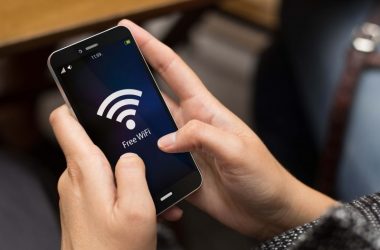 The idea behind FMC is to create a super-voice service that lets customers mingle calls between fixed-line and mobile handsets. A customer could set up rules that govern the conditions under which a call placed to one or the other line is completed. The easiest example is a rule that says, “If my mobile phone is off, ring the call on my fixed line instead of going to voice mail.” This could be expanded to include a test for specific numbers, letting non-critical calls go to voice mail. It would also be possible to do the opposite: Ring fixed-line calls through automatically to the mobile number if the mobile phone is on.
The idea behind FMC is to create a super-voice service that lets customers mingle calls between fixed-line and mobile handsets. A customer could set up rules that govern the conditions under which a call placed to one or the other line is completed. The easiest example is a rule that says, “If my mobile phone is off, ring the call on my fixed line instead of going to voice mail.” This could be expanded to include a test for specific numbers, letting non-critical calls go to voice mail. It would also be possible to do the opposite: Ring fixed-line calls through automatically to the mobile number if the mobile phone is on.
There is clearly a customer value for all of this, but the value proposition for service providers goes beyond making customers happy. Where the value is found varies depending upon what kind of voice carrier is looking at FMC. With FMC, operators aim to introduce Innovative and differentiated offerings, increase cross-selling and up-selling potential for mobile and fixed services, Increase ARPU on the long-run through premium services and increased usage, Increase stickiness opportunities which lead to lower customer churn, improved customer satisfaction with innovative services as well as an integrated customer service, and lower operational costs through synergies by maintaining a common all-IP platform
For users, FMC is likely to bring about major changes in calling. In the future, you might not have a mobile number and home number, just a personal number and set of rules that determine which calls placed to that number are connected on each of the voice services you have. For outside sales and support personnel, it could mean more freedom and flexibility; for home users, a single phone that works everywhere. “ Enterprise users can hope to achieve an enhanced personalized user experience with ubiquitous and uniform access to content and information across fixed and mobile access channels through a single device. They value the convenience of having all services offered by a single operator, one bill for all telecommunication needs, seamless and uniform communication experience, increased cost efficiency with better value for money, blending the convenience of mobile communications with the high quality of fixed line communications,” says Hadi Raad, Principal, Booz & Co.
Ravi Mali, Director of Service Provider Business, Juniper Networks, adds: “So we do seem to have a few applications that are presently very popular. We have iPhones and Blackberry that allow the Enterprise to be connected 24×7. This is a true FMC application where data (email) moved to a mobile and with it a lot of enterprise applications.” He cites the examples of dual mode where the laptop connects to the Internet via a USP dongle which actually uses the mobile 3G network. Another great example is IP soft phones that can be used through laptop but still is part of the enterprise telecom system. Calls are automatically routed to the laptop even when you call the office. It’s truly unified communications. “We can look at another example where instead of buying a telephone system, an Enterprise can subscribe to Hosted PBX which is IP or SIP based.”
Firing up Femtocells
A key technology that is expected to drive FMC is femtocells. A femtocell—originally known as an Access Point Base Station—is a small cellular base station, typically designed for use in a home or small business. It connects to the service provider’s network via broadband (such as DSL or cable); current designs typically support 2 to 4 active mobile phones in a residential setting. A femtocell allows service providers to extend service coverage indoors, especially where access would otherwise be limited or unavailable. For a mobile operator, the attractions of a femtocell are improvements to both coverage and capacity, especially indoors. There may also be opportunity for new services and reduced cost. The cellular operator also benefits from the improved capacity and coverage but also can reduce both capital expenditure and operating expense by backhauling the mobile traffic over an existing fixed network but still be able to charge customers their normal mobile phone charges “Femtocells are an alternative way to deliver the benefits of fixed-mobile convergence. The distinction is that most FMC architectures require a new (dual-mode) handset which works with existing unlicensed spectrum home/enterprise wireless access points, while a femtocell-based deployment will work with existing handsets but requires installation of a new access point that uses licensed spectrum,” says Mali.
Despite the hype, heavy adoption isn’t expected until the next decade, analysts say. Dragging it down is carrier reluctance to market FMC services and tepid demand among companies still trialing products from established vendors and newcomers. There are other barriers as well.
One of the main bottlenecks in reaching FMC is readying the network and infrastructure to offer such services. Typically operators follow a phased approach toward FMC enactment, with increasing levels of convergence. Level one involves leveraging convergence as a marketing concept by offering fixed and mobile services in a single bundle with one bill. Level two involves tariffs convergence, like circles of fixed and mobile lines enjoying preferential rates. Level three involves service convergence, such as Forwarding of mobile calls to fixed line with or without a base unit. Finally, level four would involve network convergence, says Raad.
Ihab Ghattas, Assistant President, Huawei, adds that the the concept will need to be implemented on several levels/layers to be able to reach the level of convergence that we all aiming at. “The most important level for the end user will be the convergence of the services irrespective of the network/access device.”
Another significant hurdle is the back office. Zoran Vasiljev from the telcom consultancy firm Value Partners says the operational support systems to FMC are not ready yet. Nonetheless, analysts believe FMC will generate more than $35 billion in revenue worldwide for service providers and hardware vendors over the next five years. Enterprises will continue to invest in Wi-Fi networks in offices and factory floors, and voice over WLAN (VoWLAN) to save money on cabling and mobile voice calls, and integrate mobile user functions with their fixed PBX systems. These investments will form the foundation of enterprise FMC deployments. But the carrier disincentive dilemma will continue to plague the enterprise for some time.





